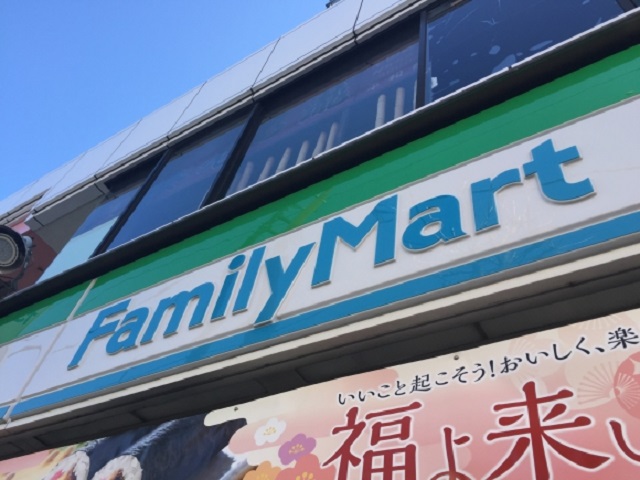
Goodbye eat-in spaces, hello more convenience store clothing?
There’s a lot of joy to be found in just randomly browsing through a Japanese convenience store, where the high-quality and uniqueness of the ever-changing lineup of food and drinks means there’s always a tasty surprise or two waiting for you. And as you round one aisle of shelves, you might have yet another surprise when you see tables or a counter with chairs. For example, here’s one inside a branch of Family Mart, one of Japan’s largest convenience store chains.
Called eat-in corners or eat-in spaces, they’re a testament to the high quality of Japanese convenience store offerings, showing that the food and drink is good enough to warrant sitting down and enjoying like you’re at a mini cafe. However, the eat-in space’s days are now numbered at Family Mart, who says they’re planning to get rid of them at branches nationwide.
Family Mart made a big push to add eat-in spaces to its shops in 2017, and currently you can find them in about 7,000 branches. However, Family Mart has announced that it will be converting the eat-in areas to sales floor space as part of its efforts to “meet diversifying customer needs.”
Now, as a retail business, when Family Mart says it wants to more effectively “meet customer needs,” that effectively means they want to increase sales, and in turn profits. According to Family Mart, the company has observed reduced usage of its eat-in spaces since the coronavirus pandemic, and feels that their floor space could be better used for stocking items from its clothing line, which it’s seeing expanding demand for, as well as non-food-and-drink daily essentials such as toilet paper and detergent.
▼ A before/after concept image from Family Mart
Something Family Mart doesn’t mention in its announcement, but which may be playing a part in lower usage of its stores’ eat-in spaces, is the way convenience store purchases are taxed. When you buy food or drinks at a Family Mart with an eat-in space, the clerk will often ask if you’re purchasing it to eat there or to take home. This isn’t because Family Mart is so fancy as to provide table service for its eat-in customers, though. It’s because sales tax in Japan for groceries and take-out food and drink items is 8 percent, but sales tax for food and drink consumed in a restaurant is 10 percent. In the eyes of the law, convenience store eat-in corners count as “restaurants” and carry the higher tax rate, the cost of which convenience stores pass on to their customers. In other words, if you’re buying something at Family Mart, it’s more expensive if you eat or drink it in-store, and less expensive if you instead have it back at your home or office, in the park, or even in the parking lot.
This wasn’t always the case, though. Both eat-in and take-out items were taxed at an identical 8 percent until October of 2019, and so reduced use of Family Mart’s eat-in spaces might not be so much a case of people having gotten used to not eating in-store during the pandemic as it is a case of customers saying “Yeah, I’d rather pay the cheaper of the two prices,” especially as consumer prices continue to rise and outpace income growth in Japan.
Family Mart says that some stores might retain their eat-in spaces, but the push to convert them to sales spaces will be taking place across the entire chain, with 2,000 eat-in spaces to disappear by the end of this year.
Source: Family Mart, IT Media via Yahoo! Japan News
Top image ©SoraNews24
Insert images: Family Mart
● Want to hear about SoraNews24’s latest articles as soon as they’re published? Follow us on Facebook and Twitter!